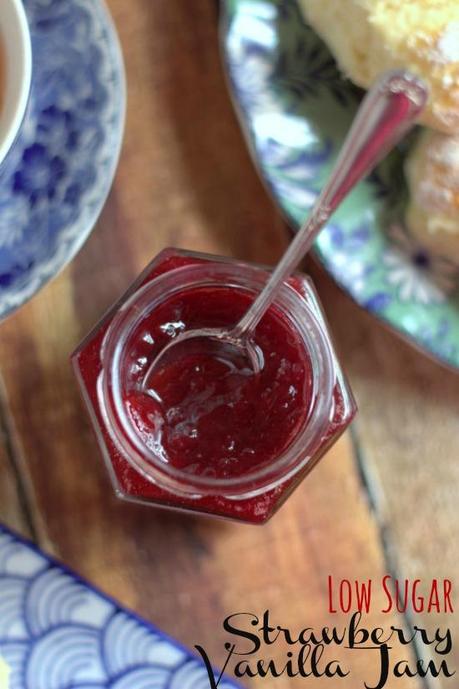 There is something special about homemade strawberry jam. Shop bought jam never quite compares, although this may have something to do with the low levels of strawberries in some brands. Making your own jam means you control both what is in it and the amount of sugar you use. I have played with many low sugar jams over the years, and many different variations of strawberry jam, but this jam with a good dose of vanilla is by far my favorite.
There is something special about homemade strawberry jam. Shop bought jam never quite compares, although this may have something to do with the low levels of strawberries in some brands. Making your own jam means you control both what is in it and the amount of sugar you use. I have played with many low sugar jams over the years, and many different variations of strawberry jam, but this jam with a good dose of vanilla is by far my favorite.
Sugar is the preservative in jam that prevents the fruit spoiling. Although most jam recipes use equal amounts of sugar and fruit, it is possible to substantially reduce the amount of sugar and still have a product that can be stored on a pantry shelf rather than in the fridge. A word of warning though, whilst I have had jars of traditional jam lurk in the pantry for a few years that have still been fine when opened, this will not be the case with low sugar jams. These jams have a much shorter shelf life (a maximum of 12 months) and will need to be heat processed if you wish to keep it for longer periods.
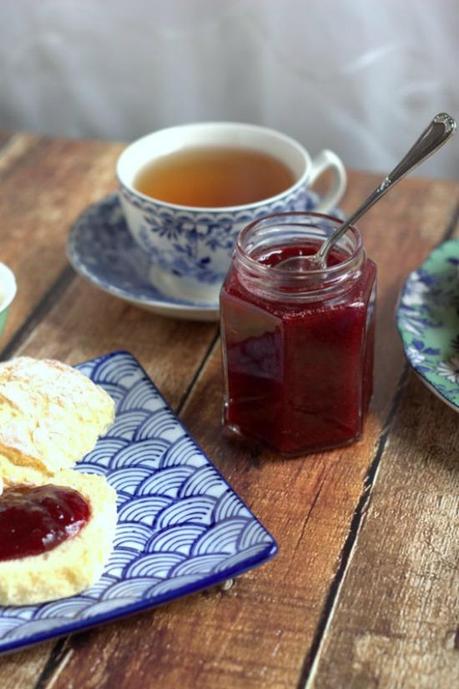
For the longest time I used a 70% sugar:fruit ratio (700g sugar:1 kilo fruit) in my jams. There are some jam makers who dare to push the boundaries and use quite low levels of sugar (as low as 20%) with delicious results. It was discovering this that led to further experimentation. I have now settled on a personal level of 40% sugar:fruit ratio (so 400g sugar/1 kilo fruit) in my jams. For me this is a good balance between tempering the sweetness and retaining some shelf stability.
We don’t eat loads of jam, but I do love to make it. If you arrive on my doorstep at the right time you will find yourself leaving with a jar. I find jam very useful in baking, tucked into the middle of a jammy scone or scooped into the center of thumbprint biscuits, so I always like to have a few jars on the shelf. As I am forever tinkering with flavor combinations, I only make my jams in small batches so as to leave room on the shelves for further experiments.
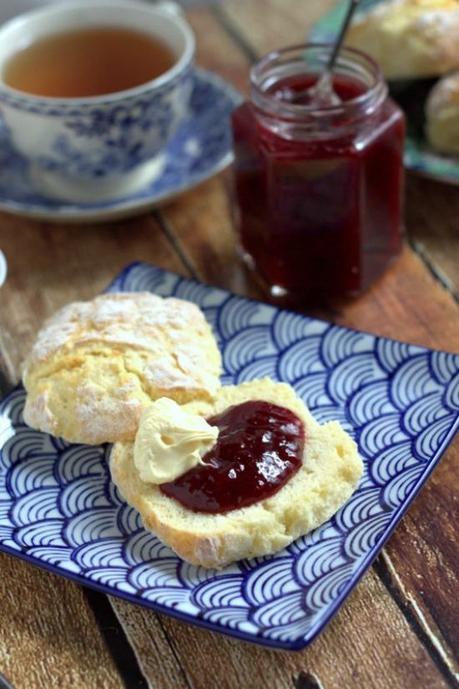
Decreasing the sugar will give you a softer set than you would normally get in a full sugar jam. I’m OK with this. I am happy to have softer jam in exchange for being able to taste the fruit. I have still achieved a firm set with high pectin fruit such as plums, but this strawberry vanilla jam is of a much softer consistency than your standard strawberry jam.
Strawberries are in season at the moment, and as I have no jam left on the shelves it is a perfect time to restock. If you have never made jam before, I encourage you to give it a try. It is only a small batch, and the worst thing that can happen is the jam doesn’t set. If this does happen, bottle it up, label it as strawberry vanilla sauce and use it for gifts. No one need never know that wasn’t your intention in the first place.

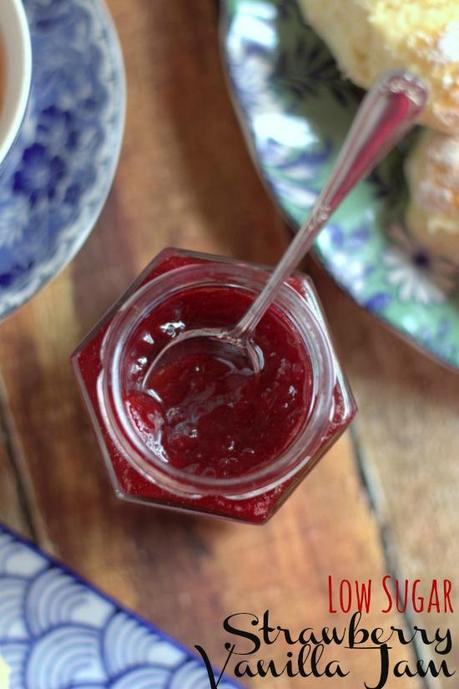
Make sure that your jars are well sterilised prior to bottling the jam to maximise the storage time. Heat process the jam if you wish, but personally I never do and have never had a problem.
I use a traditional French jam pan for making my jam, but jam can be made in any pan you may have. It is better for the pan to be wider with lower sides than a deep pot as this will help the water to evaporate, but if a pot is all you have do not let this put you off. The jam may just take longer to cook. .
It is important that the jars used to bottle the jam are warm. I get around this by sterilising my jars in the oven (see Notes).
This jam must be kept in the fridge once opened. Author: Tania @ The Cook's Pyjamas (adapted from Wholefood Baking) Serves: Not quite 3 cups Ingredients
- 1 kg strawberries, hulled and halved (or quartered if large)
- 400g raw sugar
- 1 small lemon, cut into 4 pieces and pips removed.
- 1 vanilla pod, split
- Place a small plate into the freezer. This will be used to test the jam for set and must be cold.
- Place all of the ingredients in the pan over a low heat.
- Allow the sugar to dissolve, stirring occasionally. The juices will start to weep from the fruit.
- Once the sugar has dissolved, increase the heat to medium-low and allow the jam to gently bubble for about 15-20 minutes, stirring frequently. The fruit will start to soften and visibly appear darker.
- Increase the heat to high and allow to boil until the jam has darkened and thickened. Stir the jam frequently and don't walk away during this stage as the jam can catch and burn on the bottom of the pan.
- Once the jam has thickened, remove the pan from the heat and test it for set. To do this, place a small spoonful of jam on the cold saucer and run your finger through the jam to test the consistency. If the jam is set there will be a clear line through the center of the jam, and there will be no liquid seeping back into the line. (see photo).
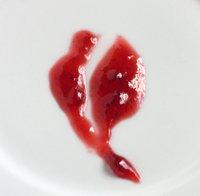
- If the jam is still slightly watery, and liquid seeps into the line you created with your finger, return the jam to the heat and cook for a few more minutes. Repeat the saucer test.
- When the jam is set, place the warmed jars on a cutting board or tray. This will prevent the jars cracking as you pour the hot jam into the jars.
- Fill the warmed jars with the jam. With a clean cloth, wipe the top of the jars to remove any spills or stray globs of jam, then seal the jars well with a lid.
- Allow the jars to sit undisturbed for at least 12 hours or overnight to allow the jars to seal properly and form a vacuum. If you suspect that a vacuum has not formed in any of your jars, store these in the fridge and use them immediately.
You may also like these posts




